Perforation in Modern Masonry Impact and Techniques
This past week, we looked at a really interesting building with holes made through the majority of the bricks in its facade. There are several different types of perforated masonry and one of the most common and prolific types of contemporary types of masonry units with perforations are simply blocks and bricks that have holes intentionally made in the center which are large enough to reduce the weight of the masonry unit and provide a key for installing masonry that’s stabilizes the block or brick.
We are generally working with historic bricks, especially when we’re doing repointing or tuckpointing type work. Repointing is a process of removing the mortar at the outer edge of the brickwork and then installing new or fresh mortar at the outer face of the brickwork. Doing this type of repointing work essentially can revitalize a historic wall where otherwise water or moisture will enter into the exterior surface of the wall and deteriorate the masonry further as time goes by.
Repointing stops this deterioration from continuing, for the most part these bricks, used in historic masonry construction, here in Washington DC are generally solid brick units. That means that the brick units are a continuous rectangular shape through from the face of the brick, and continuing to the part that you can’t see where it is embedded in mortar. Generally we refer to these areas as the bed joint locations and or the perpend masonry joint locations.
These type of perforations help in several ways. First, they reduced the weight of the masonry units which reduces labor cost, expedites the installation schedule, and reduces shipping costs because heavy materials require more gas or diesel fuel to transport. Secondly, it gives the brick a key. Sometimes, with historic bricks, some bricks were originally made with a frog.
A frog is a type of recess that is set into the brick to essentially provide a surface that’s more gripping than just a flat brick bottom or a flat brick top. The perforations came after historic bricks with frogs, but it works in a similar and even better way because it provides a better key, a better type of gripping area to bite into or have a foothold into the bed of mortar.
Today, we’re looking at different types of perforations though, ones that we don’t see quite as often. Last week, we looked at a really interesting type of perforation that we believe may have been used for ventilation through a brick wall. The holes were so small that it didn’t detract from the walls structural capacity, significantly, but it might provide a degree of air transfer to the building.
In this week’s article, we’re looking at several different examples of a variety of different types of masonry perforations. The first one, below, is at a wall panel, below a window opening. The wall panel appears to have a multitude of very small holes. The particular example last week had one single hole per masonry unit. The masonry units were kiln fired red brick. These bricks were close to normal size but a little bit larger because they were set into a shiner position. This masonry unit, in contrast, is much larger because it’s an entire panel. Also, instead of having one single hole, it has many small holes throughout the surface of the panel.
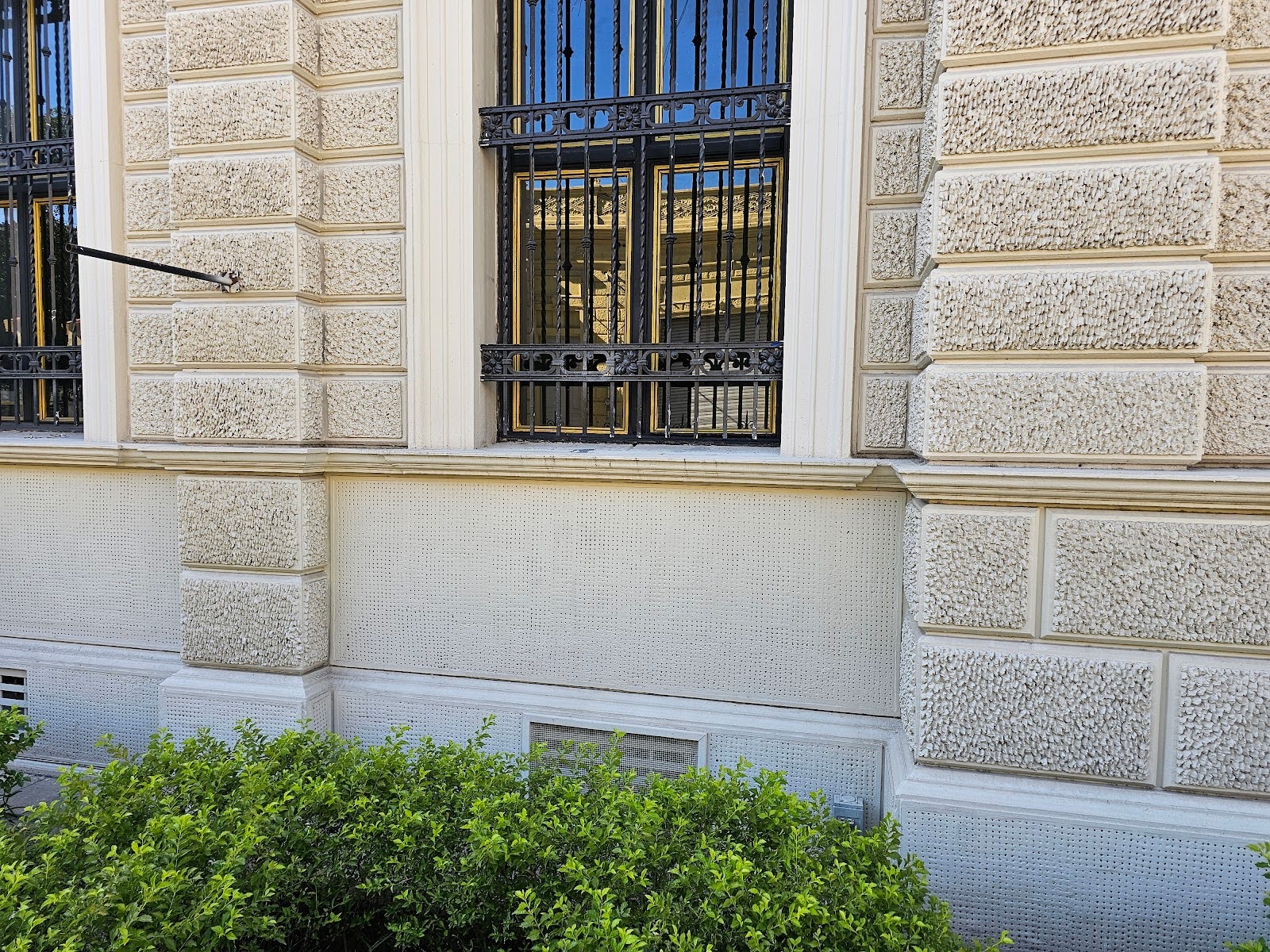
The next picture below focuses right on this particular panel. The wall units on both sides of the panel appear to be solid, throughout. This panel though has a multitude of small perforations.
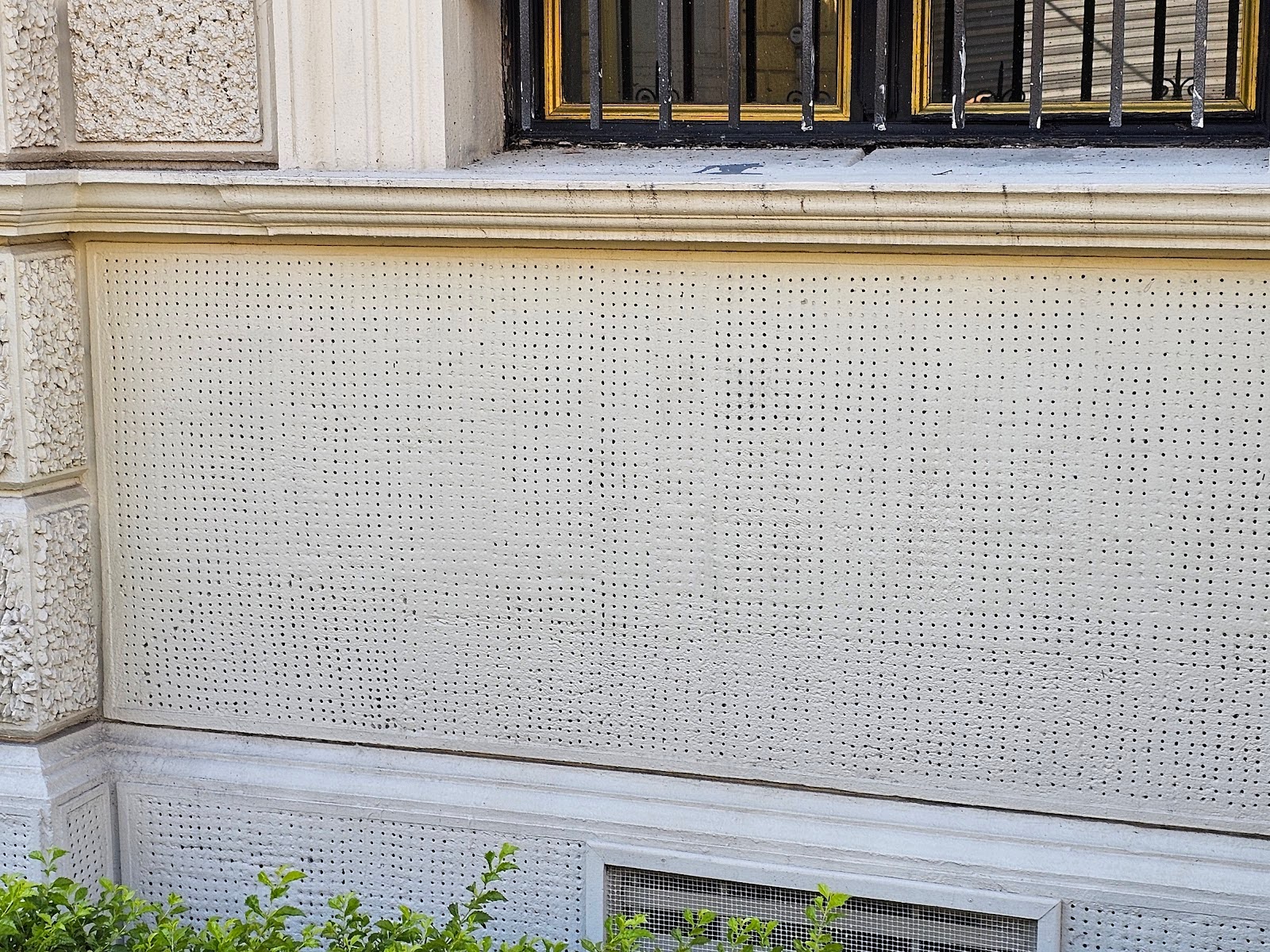
The next picture below shows this area very closely.
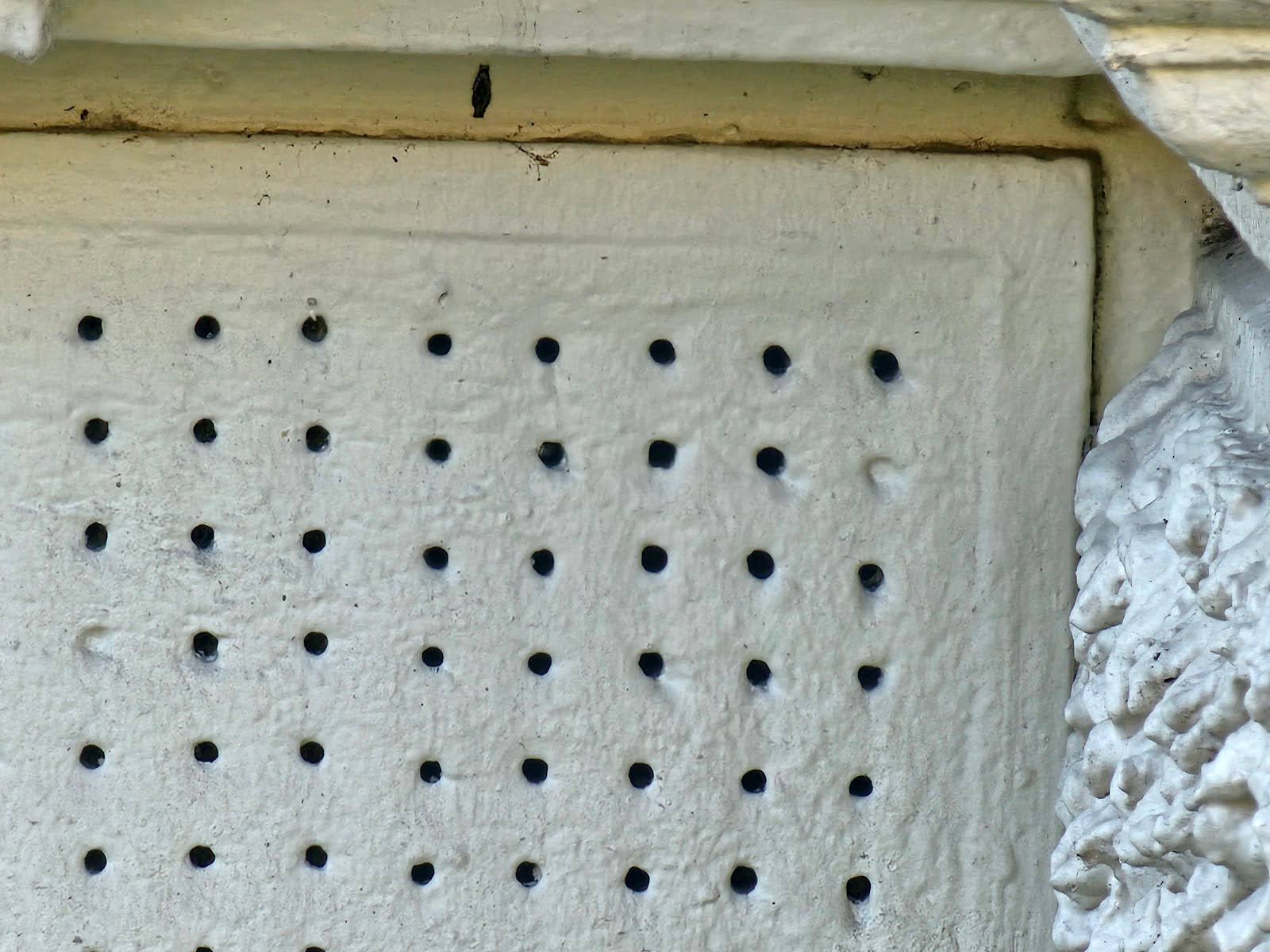
Here in the next picture below you can see something that is very different in size and shape, and is not used to ventilate, but used to filter water as water runs from the street towards the curb and gutter. This inlet, like most stormwater inlets in typical street construction, manages stormwater flow away from the center of roads and to underground piping. Here though, instead of having a typical stainless steel or cast iron grate, the perforated stone has small 1 inch square openings in a grid pattern that allows water to flow into the gutter.

The carved stone is likely incredibly heavy and requires several people or construction equipment to lift. This lower angle gives a closer view.
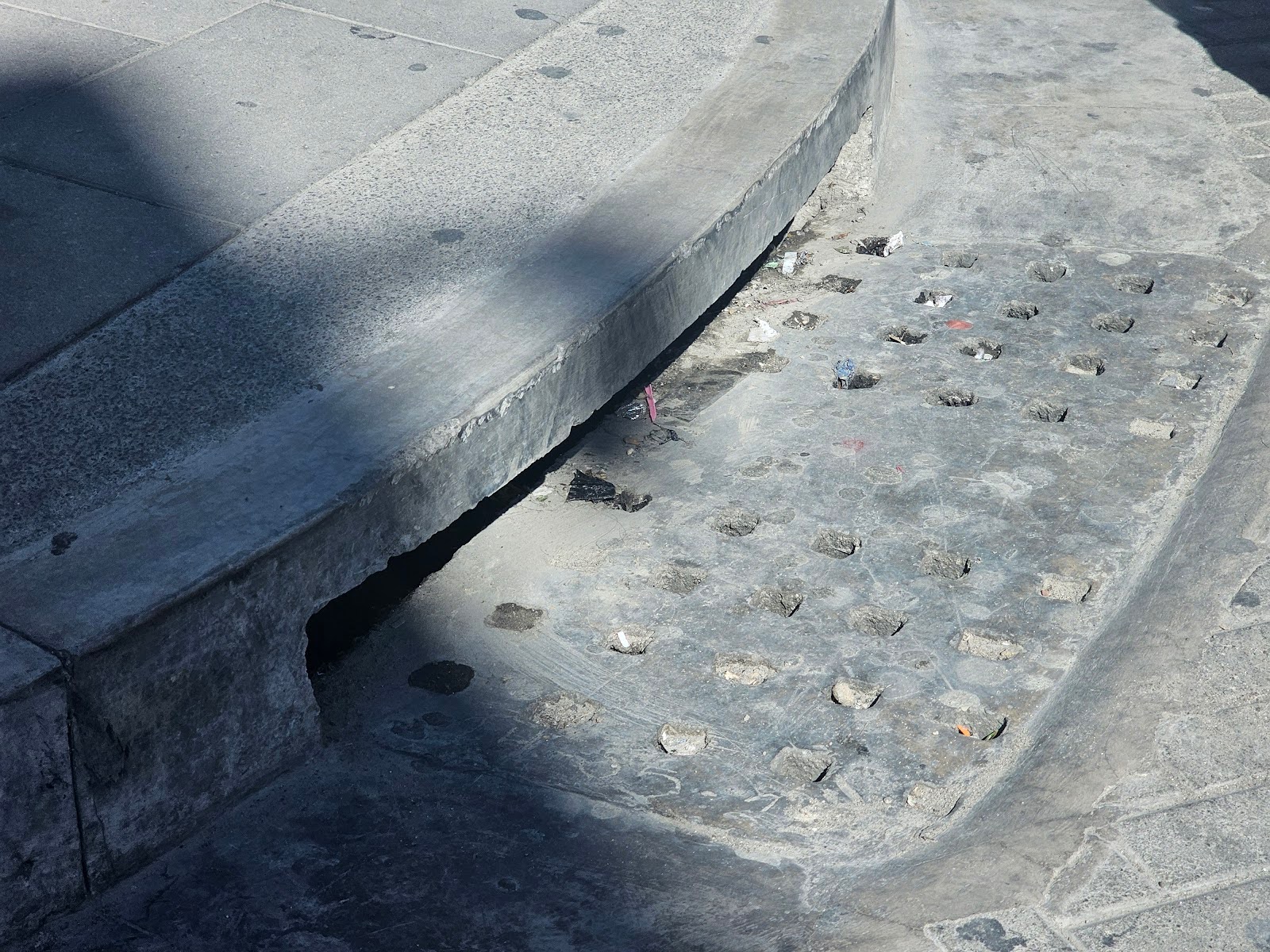
An even closer view follows below
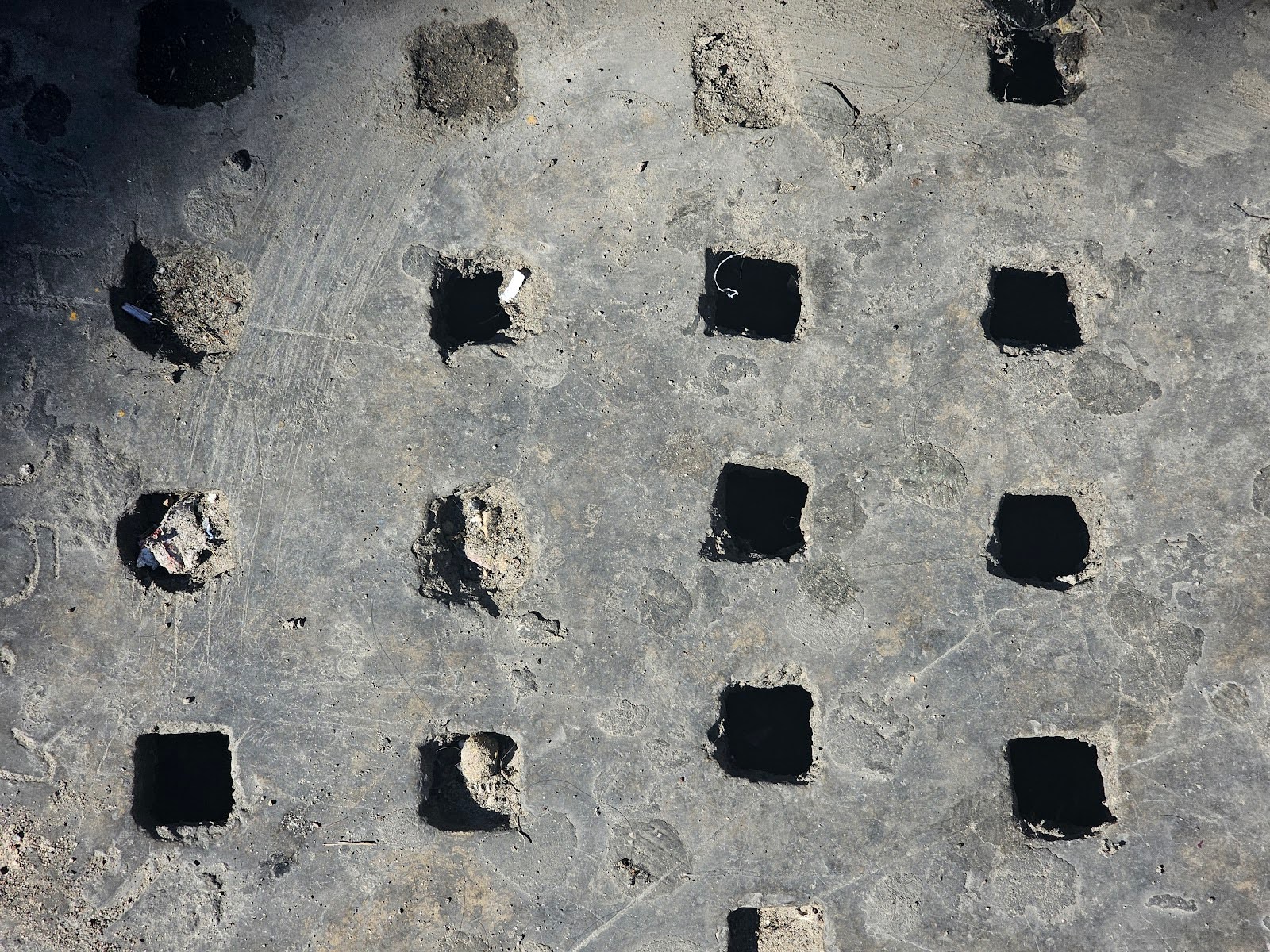
Our company, Dupont Tuckpointing and Masonry, specializes in masonry restoration, historic brick repointing, and tuckpointing services in the Washington D.C. area. These buildings are uniquely historic, and their preservation requires skilled masons who are technically trained in the best practices and knowledge of proper restoration techniques.
We understand the significance of maintaining the architectural integrity of these historic structures, and our team of experienced professionals is dedicated to delivering exceptional craftsmanship. Whether you require masonry restoration, tuckpointing, or brick repointing services, we are here to help.
At Dupont Tuckpointing and Masonry, we take pride in our work and strive to ensure that every project is executed with the utmost care and attention to detail. We are committed to preserving the rich heritage of Washington D.C.’s built environment for generations to come.
If you have any questions or needs regarding masonry restoration, historic brick repointing, or tuckpointing services, please do not hesitate to reach out to us. We would be delighted to assist you and provide you with the expertise and quality workmanship that your historic property deserves.
You can reach us by telephone at (202) 796-7644 and you can reach us by email from the contact form on our website at https://duponttuckpointingmasonrydc.com/contact-us/.




